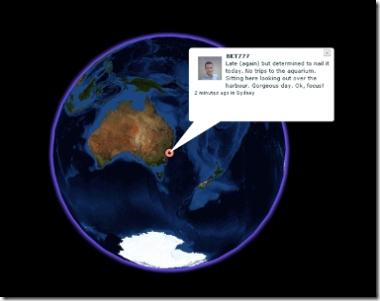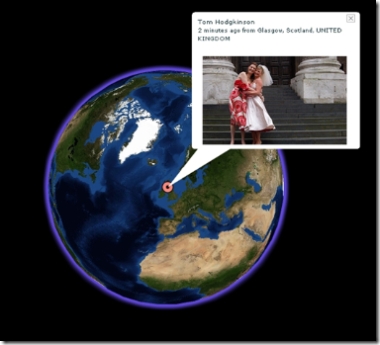Home » marketing (Page 13)
Category Archives: marketing
Putting the Sex (back) into American Politics?
The process by which different US Democrats and Republicans vie for the right to be their party’s candidate for presidency has always fascinated me (admittedly, from afar, safe in the knowledge I don’t need to vote for any of these people). The race for 2004 bought out some impressive efforts in participatory culture (remember Jib Jab’s ‘This Land’?), and this years’ Hillary 1984 video promised more in the race for 2008. While the creativity is definitely out there, one trend which has been a little unexpected is the “I’ve got a crush on…” videos attached to the Democrat candidates.
First there was the self-styled ‘Obama Girl’ with her “I’ve Got a Crush on Obama” video:
The clip and the Obama Girl herself have gained a fair amount of attention in US media, most of which is linked to from Obama Girl’s website. The girl in the clip – Amber Lee Ettinger – didn’t create the concept (or sing the song; she’s lip-synching) but has become one of the key faces in Obama’s campaign. The story behind Obama Girl is found at the Barely Political website. Now, along similar lines but a little more disturbingly, Chuck Tryon has drawn my attention to the “Hott4Hill featuring Taryn Southern” clip, which runs a fine line between representing Hillary Clinton as a politician or a sexual icon(!):
And, of course, there’s a Hott4Hill blog to emphasise Taryn Southern’s efforts.While I’m still thinking about how all of this works (and wonder if these clips have the potential to damage campaigns as much as make them appealing for younger proto-voters) you might want to have a read of ‘The Power and Playfulness of Parody: Obama, Hip Hop and Misunderstanding’ by Bernie Heidkamp in Pop Politics which gives some context and perspective to the Obama Girl clip.
The 4400 Goes Viral (Marketing)
The 4400 has taken to viral marketing dramatically in order to build the word before the upcoming fourth season of the TV show. According to AdWeek:
To promote the new season of The 4400 on USA Network, Campfire has created a wide-ranging interactive world consisting of 80 videos that run from 30 seconds to five minutes and six Web sites. […] The 4400 follows 4,400 people who are abducted, taken away and then returned to planet Earth. After their return, many of them discover they have superpowers. As the fourth season begins on June 17, the plot follows the development of a drug called Promicin: it gives the users superpowers, if it doesn’t kill them. Three different factions emerge around the drug: pro, anti- and neutral.
On YouTube, for example, one of the show’s stars, Billy Campbell, appears in character as Jordan Collier, advocating Promicin and the decrying the government’s attempts to ban the drug. Here’s Jordan Collier dispatch #3:
Elsewhere on the net, we can find the Promicin Power website, which argues that Promicin is the key to world peace and a sustainable relationship with nature. Here’s one example that looks like it could be have been a United Colours of Bennetton advertisement in a past life:
At the other extreme, there’s also Promicin Terror which sees the drug as the biggest threat to the US since Al Qaeda. Clearly building on the famous ‘Daisy‘ political ad of the 60s (which was recycled in the US debates about the War with Iraq), this is an example of a clip campaigning to ban the drug:
I quite enjoyed the last season of The 4400 and am heartened to see the show’s producers so actively embracing the potential of video-sharing and online word-of-mouth. The clips are a little over-produced, but given the state of a lot of TV advertising today, I’m sure they could easily be mistaken for the ‘real thing’.
Visualising the User-Driven Web
I was just pointed to Flickrvision, and I’m impressed. Flickrvision, and its older sibling, Twittervision, are program mashups by David Troy which combine the visualisation of Google Maps with the user-created data flowing out of Flickr and Twitter. There’s a ‘standard view’ in which individual Tweets or Flickr images are posted on a flat world map, but even more impressive for those visually-minded is the 3D version which inserts Tweets and Flickr photos continually onto a global map (which spins as needs be to show the origin of each post).
An example of Twittervision:
An example of Flickrvision:
Watching these globes spin, each showing a fragment of life around the world, is incredibly engaging. This is the user-driven web at its most visually enticing. I have to say, were I in charge of a Communications Studies or Media Studies department (which I’m not) and I could find a couple of spare monitors and computers (which, in all fairness, departments probably couldn’t), then I’d leave these running 24/7 in the front foyer; the best advertisement for the studying the user-driven web is watching it happen in all its visual glory, right in front of you!
300: An Online Marketing Hit
There’s been a lot of talk about 300, which is now, financially at least, the first big blockbuster of 2007. Leaving aside Iran’s outrage at the film’s depiction of their history, one of the most interesting elements of the film was the clever and canny marketing strategies which found success in online arenas where many others have tried, but failed. Deborah Netburn’s article in the LA Times points out that 300 succeeded where others (most notably Snakes on a Plane) only appeared to work until the people voted with their feet at the box office:
Fanboy buzz is not enough to sell a film — “Snakes on a Plane,” anyone? — but Garabedian points out that while the online community was obsessively talking about “Snakes” they were ultimately making fun of it. The people who were driving the chatter around “300” were genuinely excited about the film, especially the way it looked. And after Comic-Con, Warner Bros. marketing department made sure that the fanboys got the usual dribs and drabs of movie art and trailers just to keep their excitement up.
The marketing folks also took full advantage of MySpace. There was of course the requisite MySpace page for the film (now standard for all movies) — featuring a ferocious looking muscle man in a metal helmet plus tons of video clips, wallpapers and links to the film’s official website. But the stroke of genius came when the studio sponsored a feature upgrade to the site that told users they could store 300 photos on their profile thanks to the movie “300.” (Previously the limit had been 12). That started Jan. 2 and was incredibly popular with teens. The result was billions of ad impressions and 8 million viewings of the trailer. Is it any wonder that the 52% of the people who saw “300” were under 25?
There are also mundane reasons “300” might have done well. A generally warm weekend across the country encouraged people to get out of the house and brave long lines, and no other major film was released against “300,” so it didn’t have much competition. And while the critics have been lukewarm on the film — faulting it for poor dialogue and a thin story — nobody has said anything negative about the visuals. And to a generation of kids who have grown up with the lush worlds of video games, “300” was a familiar visual masterpiece.
The ‘300 images’ idea is definitely a clever one, and shows that marketing online really has to think outside the box of traditional hype-building.
On a differrent note, 300 is also interesting in that it was entirely edited on Apple Macs. For the tech details, visit the Raw Feed.



